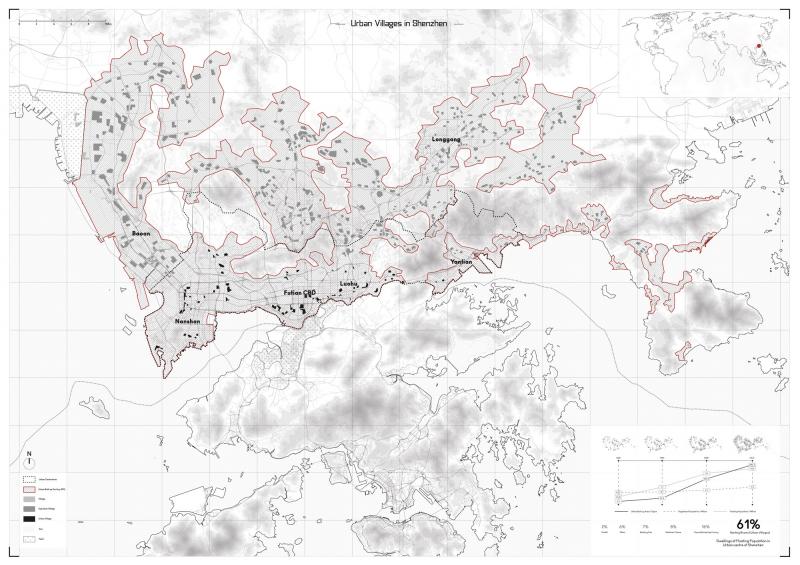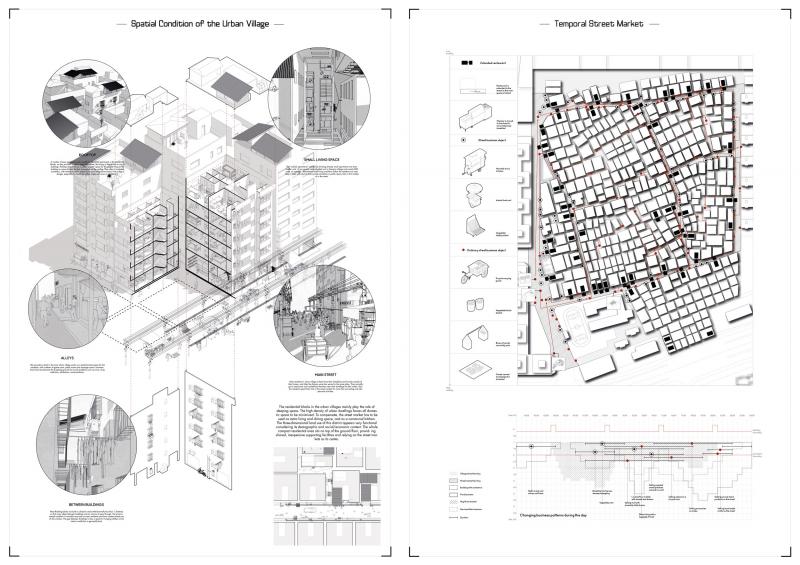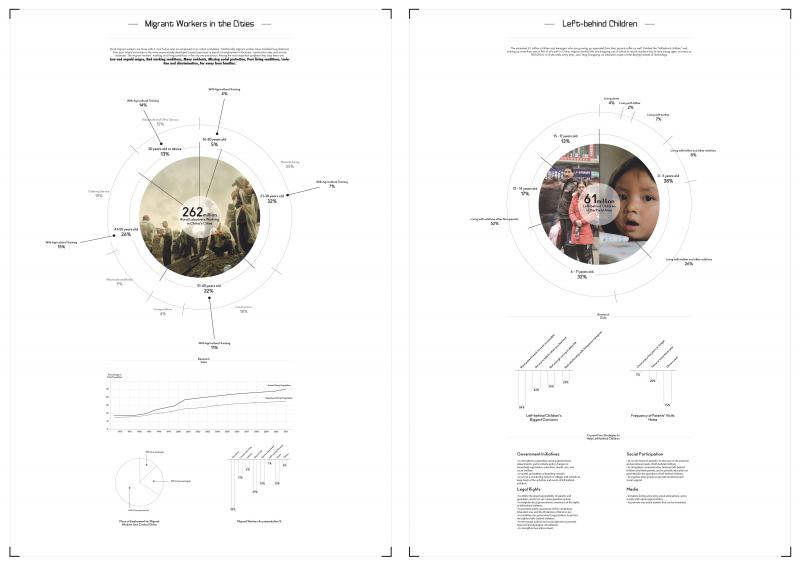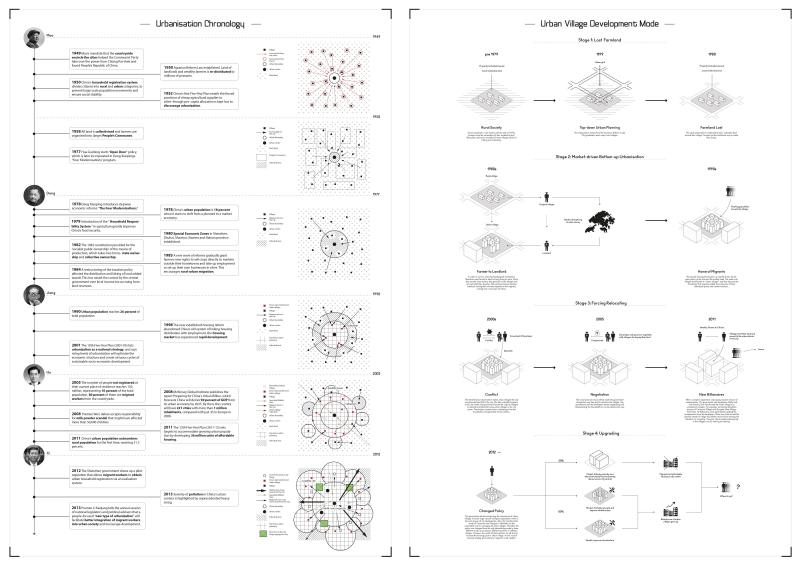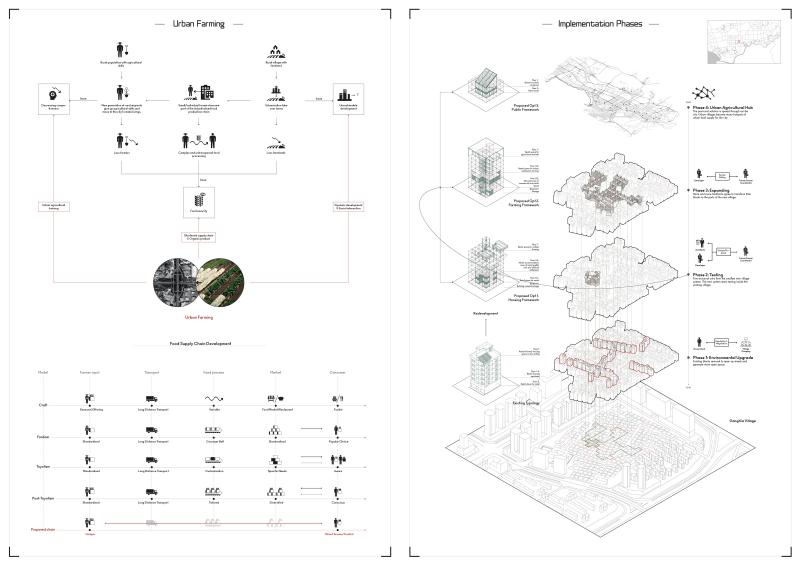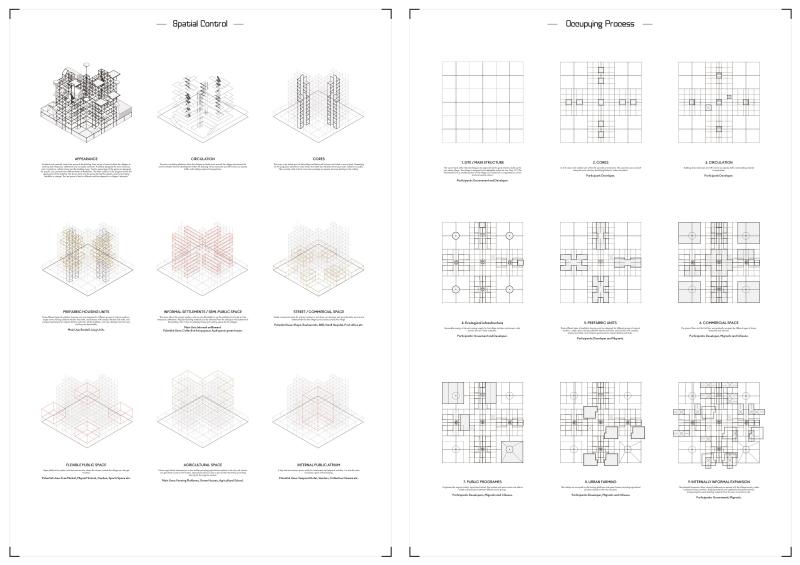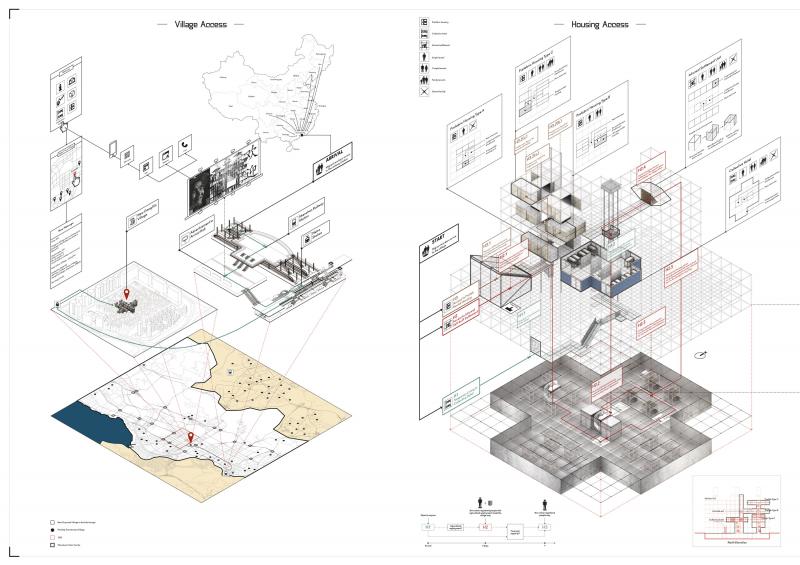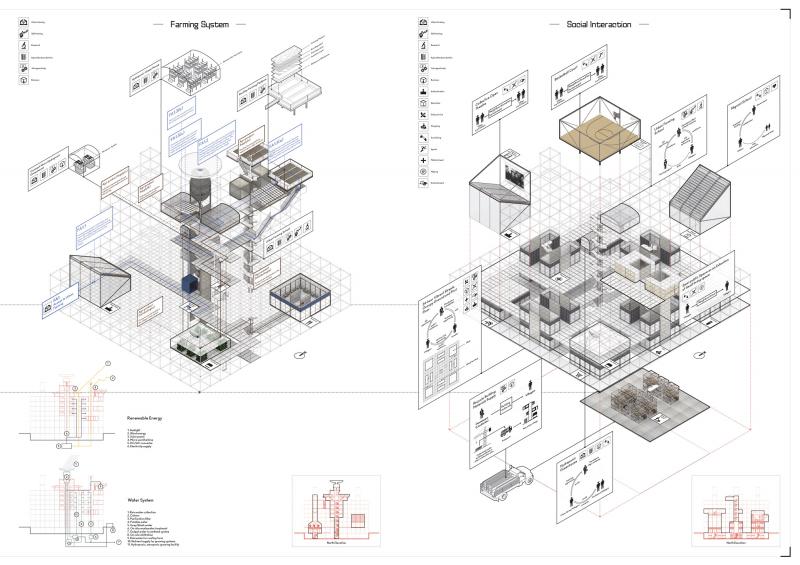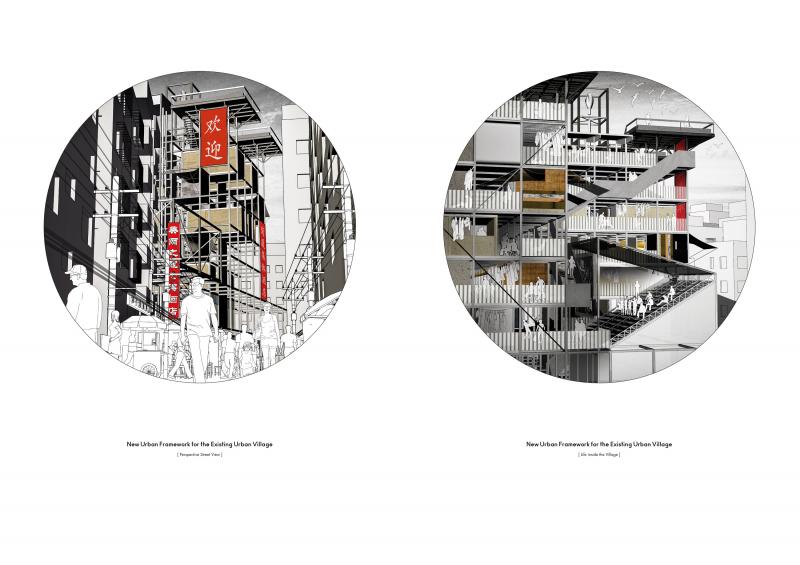From Urban Village to Rural City
Urban villages have always been seen as the urban slum in the Chinese context, which in fact were the epitome and consequence of the rapid urbanisation in China. Migrant workers, a special group of population who live in the urban village with rural background come to be the driving forces behind the cities' development. However, the socio-economical struggle and class differences lead to a collapse of Chinese urbanisation, and urban villages were forced to seek a new transformation and sustainable development under such circumstances.
The project tries to revert the lost of farmland during urbanisation back to the city, and try to seek a post rural solution to new Chinese urbanism. Architecture works as a framework to re-regulate the informality and providing a transient during this process.

